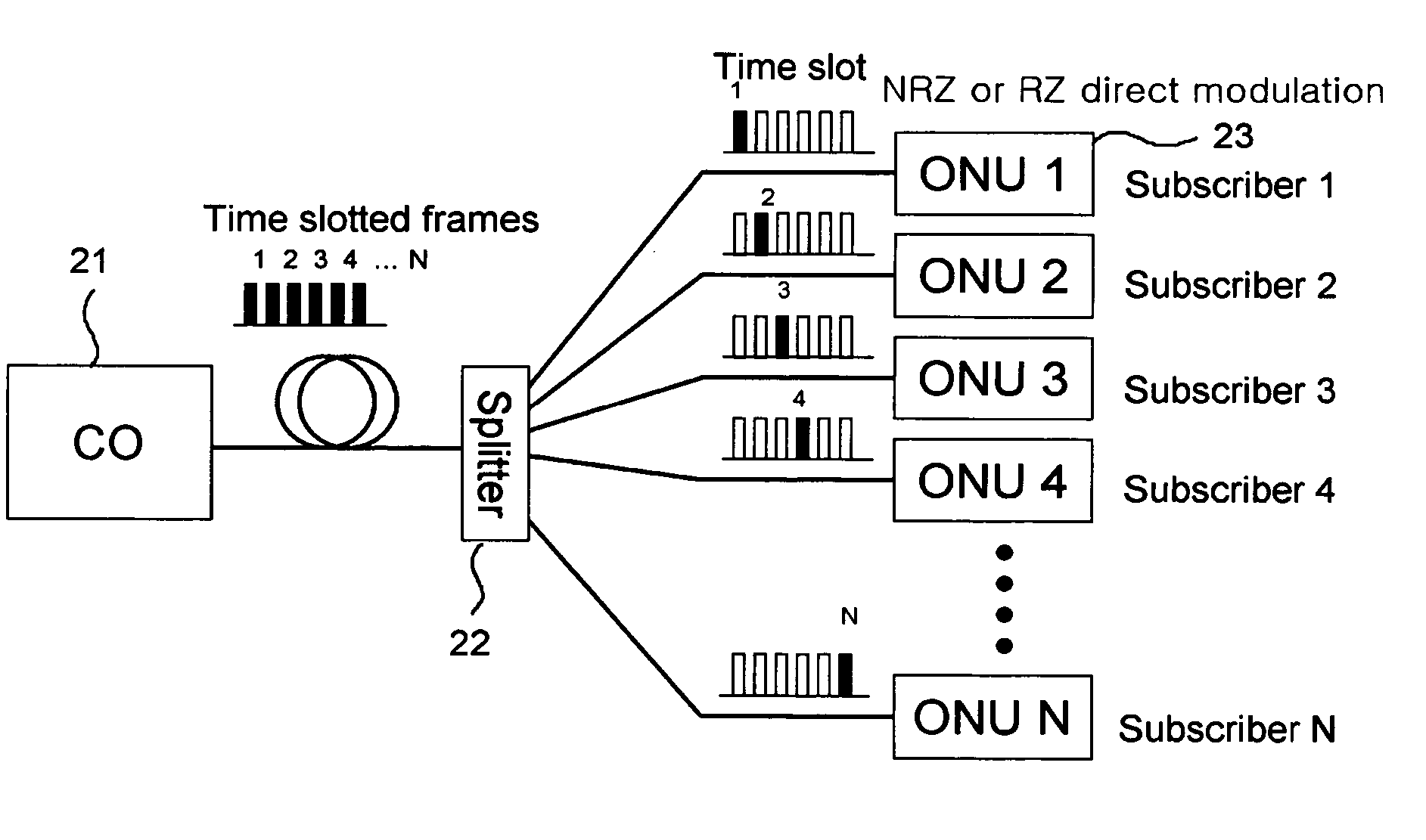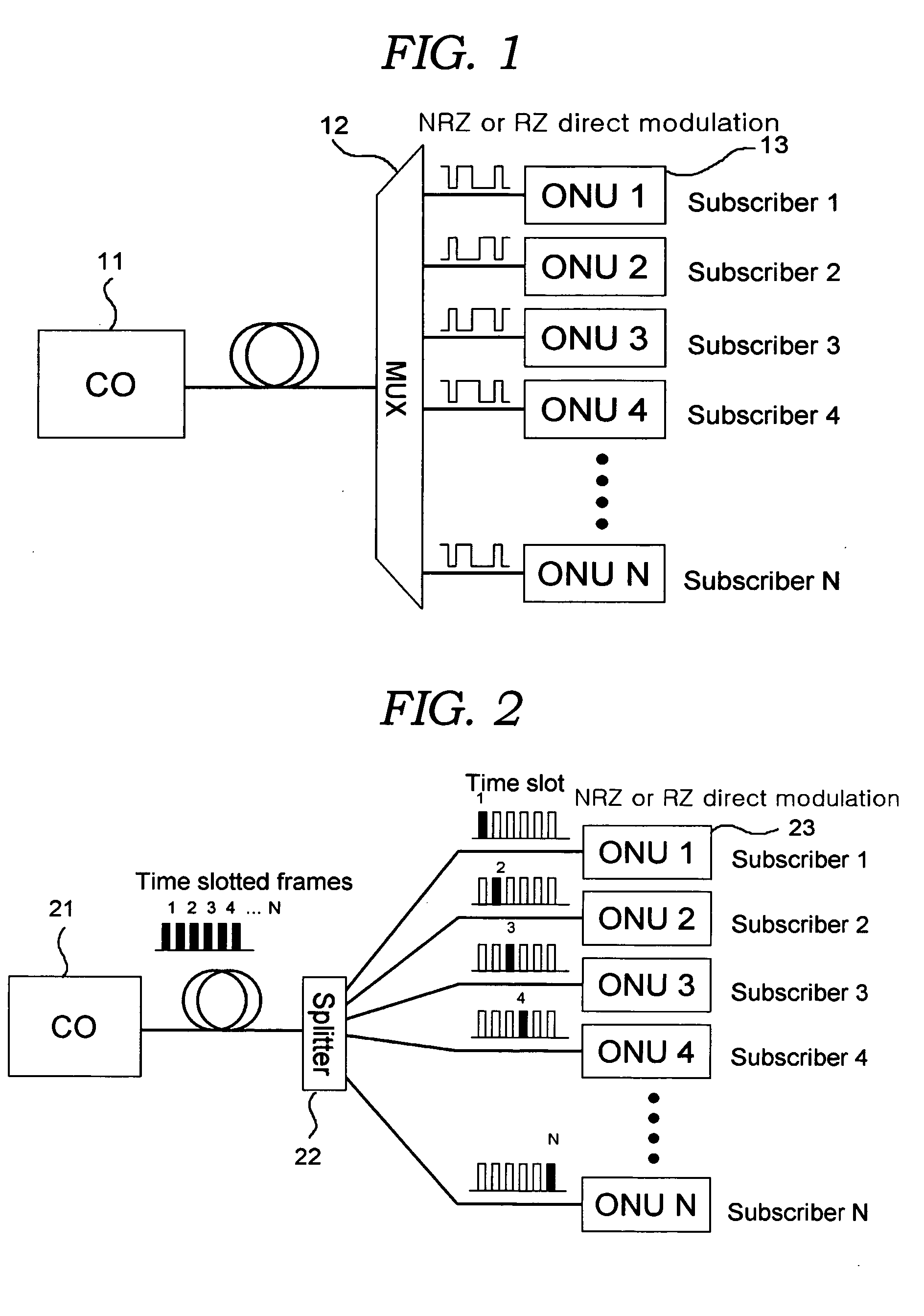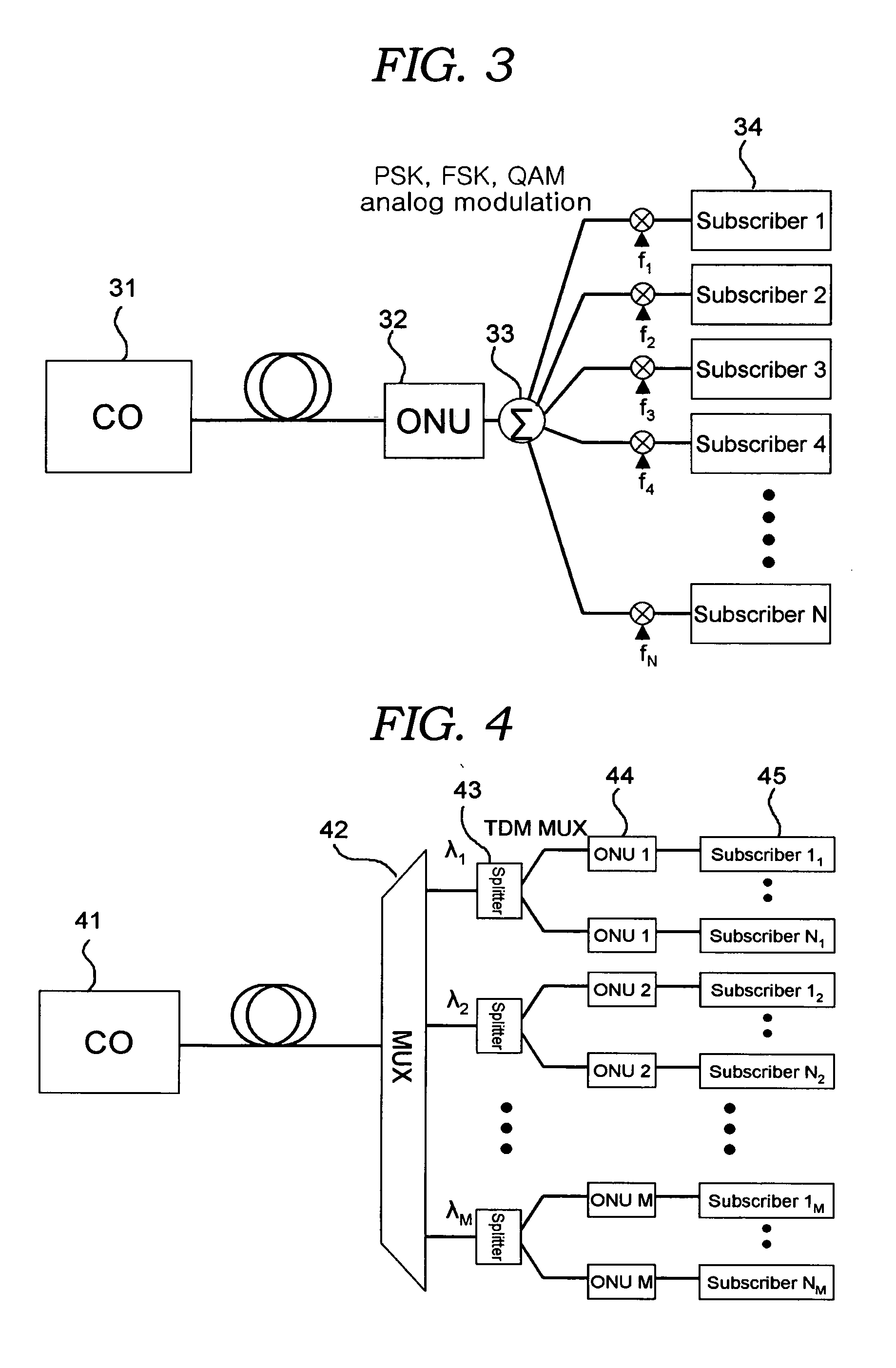Optical access network using wavelength-locked WDM optical source injected by incoherent light
a wavelength-locked, incoherent light technology, applied in the field of passive optical networks, can solve the problems of low spectral efficiency, oblique interference noise, and the above-described method is not suitable for increasing the spectral efficiency of the general optical network, and achieves low manufacturing cost, high output power, and sufficient output power.
- Summary
- Abstract
- Description
- Claims
- Application Information
AI Technical Summary
Benefits of technology
Problems solved by technology
Method used
Image
Examples
Embodiment Construction
[0037] Preferred embodiments according to the present invention are described in detail with reference to FIGS. 7 to 11 below.
[0038]FIG. 7 is a schematic diagram of a PON using wavelength-locked FP-LDs according to the present invention.
[0039] In the PON of the present invention, upstream signals from subscribers to a CO 71 are grouped according to the wavelength division ports of a MUX 73, and each of the ports is connected to the light sources of the subscribers that share a wavelength through a splitter 74. When the CO 71 transmits broadband incoherent light from a Broadband inherent Light Source (BLS) 72, the broadband inherent light is filtered according to wavelengths in the ports of the MUX 73, and then is injected into the grouped FP-LDs of the subscribers through the splitters 74. The externally injected broadband incoherent light determines the oscillation wavelength of the FP-LD, and the output power of the wavelength-locked FP-LD is used as the light source of the upst...
PUM
 Login to View More
Login to View More Abstract
Description
Claims
Application Information
 Login to View More
Login to View More - R&D
- Intellectual Property
- Life Sciences
- Materials
- Tech Scout
- Unparalleled Data Quality
- Higher Quality Content
- 60% Fewer Hallucinations
Browse by: Latest US Patents, China's latest patents, Technical Efficacy Thesaurus, Application Domain, Technology Topic, Popular Technical Reports.
© 2025 PatSnap. All rights reserved.Legal|Privacy policy|Modern Slavery Act Transparency Statement|Sitemap|About US| Contact US: help@patsnap.com



